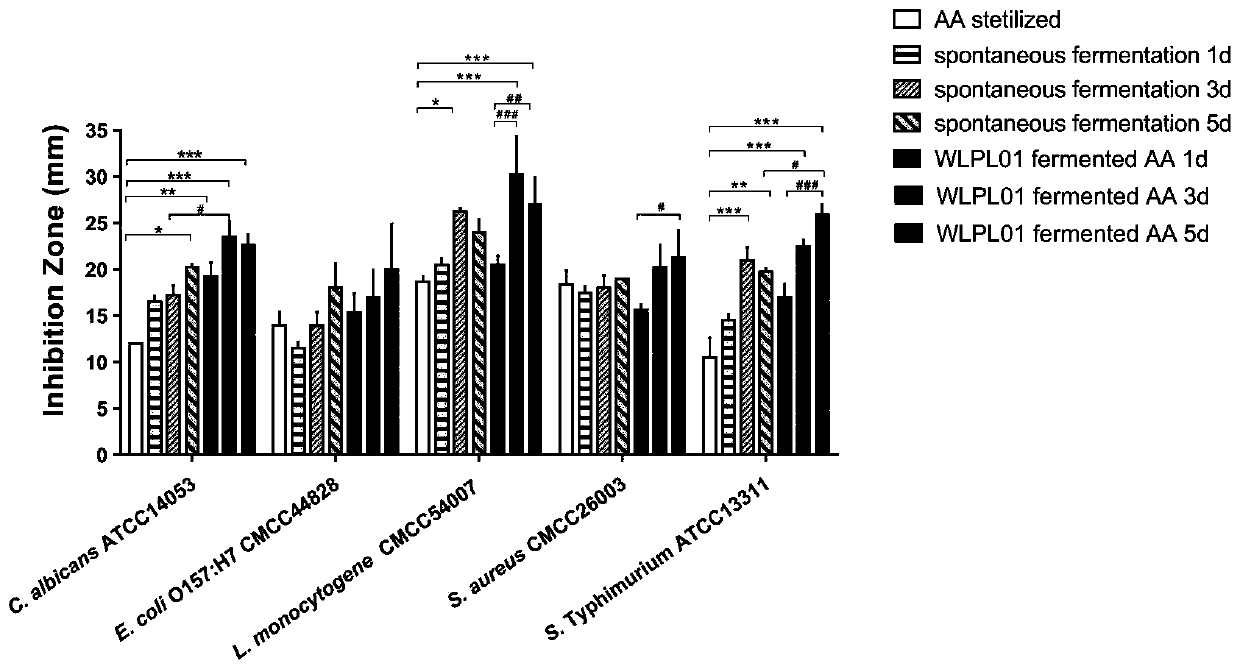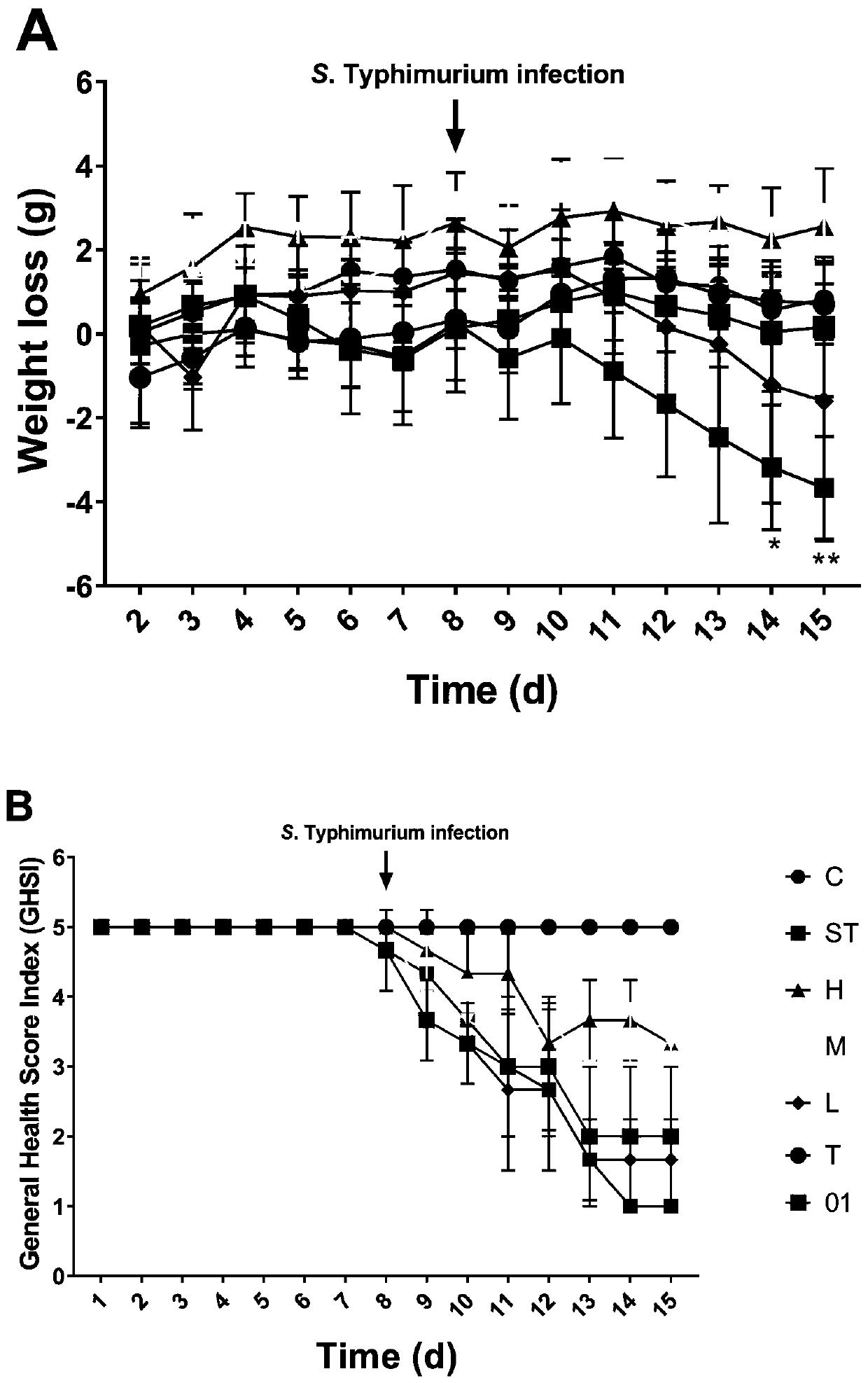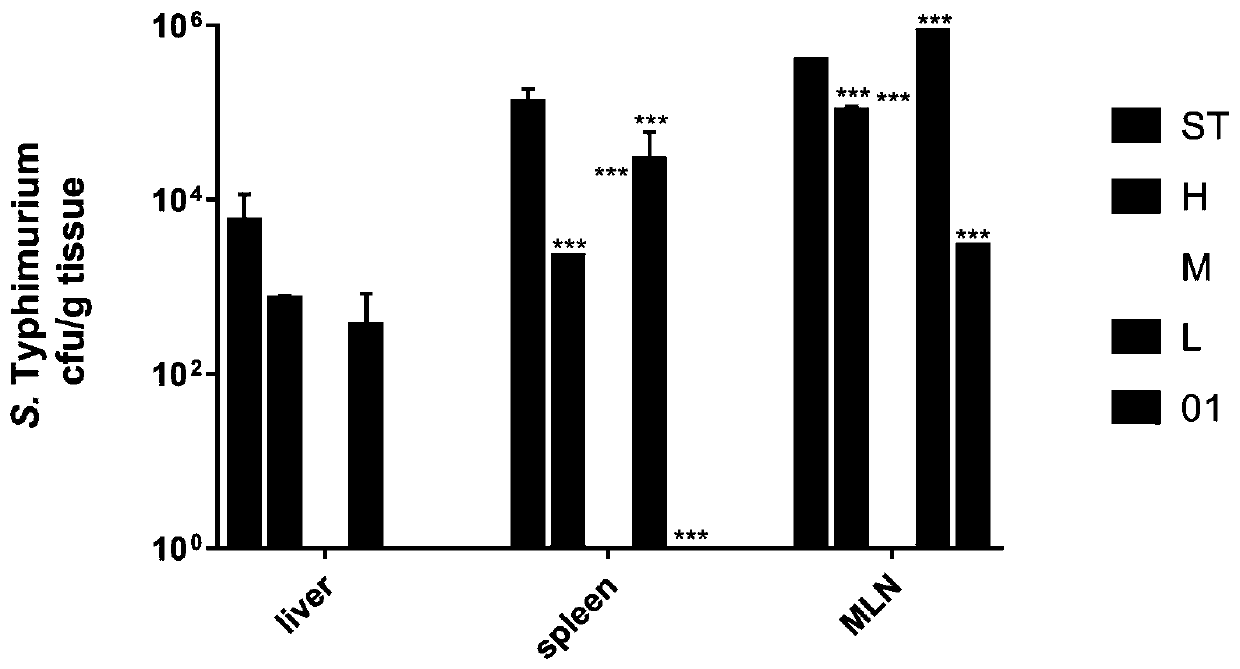Additive premixing feed and application thereof
A premixed feed and additive technology, applied in the field of additive premixed feed, additive premixed feed and its preparation, can solve the problems of reduced disease resistance of farmed animals, enhanced drug resistance of pathogenic bacteria, and restrictions on the development of aquaculture. Achieve the effects of promoting animal production performance, preventing infection, prolonging storage time and quality
- Summary
- Abstract
- Description
- Claims
- Application Information
AI Technical Summary
Problems solved by technology
Method used
Image
Examples
Embodiment 1
[0025] Preparation of Wormwood Fermentation Broth
[0026] Streak the Lactobacillus plantarum WLPL01 cells on the MRS agar plate, culture anaerobically at 37°C for 24-48h, pick a single colony and inoculate it in MRS liquid anaerobic medium, and culture anaerobically at 37°C for 16h. Wash the cells twice with 1×PBS, and adjust the cell concentration to 10 7 cfu / mL, spare. Use a pulverizer to fully pulverize the wormwood, pass through an 80-mesh sieve, remove the wormwood, and get the wormwood powder. After mixing wormwood powder (10%) and glucose (5%) evenly, add distilled water of corresponding volume, drop into 10 7 cfu / mL Lactobacillus plantarum WLPL01, fermented at 37°C for 7 days to obtain a fermented product.
Embodiment 2
[0028] Antibacterial activity analysis of wormwood fermented liquor
[0029] E.coli O157:H7 CMCC 44828, C.albicans ATCC 14053, L. monocytogenes CMCC 54007, S.aureus CMCC 26003 and S.Typhimurium ATCC 13311 were used as indicator pathogens to evaluate the antibacterial properties of fermentation products.
[0030] As in Example 1, the Wormwood wormwood fermentation liquid was prepared, and the Wormwood wormwood fermentation liquid of the 0, 1, 3 and 5 days of fermentation was selected as the experimental sample. Use 80% (v / v) ethanol to extract L. plantarum WLPL01 wormwood fermentation liquid and natural wormwood fermentation liquid respectively, after ultrasonic treatment at 40°C for 1 hour, evaporate and concentrate, and freeze-dry to solid. Dissolve 1 mg of sample in 1 mL of double-distilled water and add 200 μL to an Oxford cup, and use 1×PBS buffer as a negative control. After the culture dish was placed in a 37°C incubator for 12 hours of aerobic culture, the size of the ...
Embodiment 3
[0034] Intervention effect of wormwood fermented liquid on mice infected with Salmonella typhimurium
[0035] In order to study the effect of wormwood fermented liquid as an additive premixed feed, 56 BALB / c female mice of 6-7 weeks were selected and raised in a mouse cage environment of 20°C-25°C, 12h light and dark cycle, natural drinking water and food standards rat food. After adapting to the environment for 7 days, they were randomly divided into 7 groups with 8 rats in each group. Including: blank group (C), Salmonella typhimurium infection model group (ST), 50mg / mL wormwood fermentation liquid group (T), high dose (50mg / mL) wormwood fermentation liquid group (H), medium dose (5mg / mL) group (M), low dose (0.5mg / mL) group (L) and Lactobacillus plantarum WLPL01 group (01).
[0036] From the first day of the experiment, the blank group C and the model group ST were continuously orally administered 200 μL of normal saline every day; the 50 mg / mL group T, the intervention ...
PUM
 Login to View More
Login to View More Abstract
Description
Claims
Application Information
 Login to View More
Login to View More - R&D
- Intellectual Property
- Life Sciences
- Materials
- Tech Scout
- Unparalleled Data Quality
- Higher Quality Content
- 60% Fewer Hallucinations
Browse by: Latest US Patents, China's latest patents, Technical Efficacy Thesaurus, Application Domain, Technology Topic, Popular Technical Reports.
© 2025 PatSnap. All rights reserved.Legal|Privacy policy|Modern Slavery Act Transparency Statement|Sitemap|About US| Contact US: help@patsnap.com



